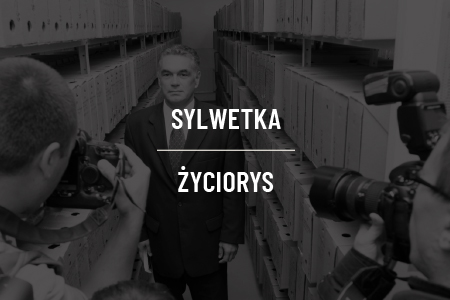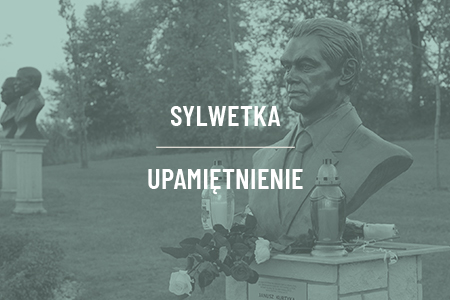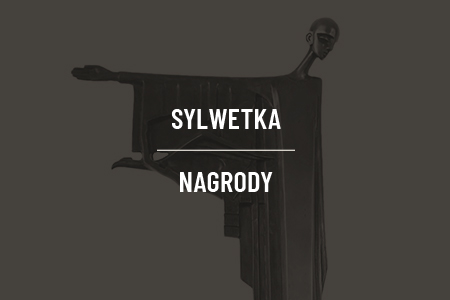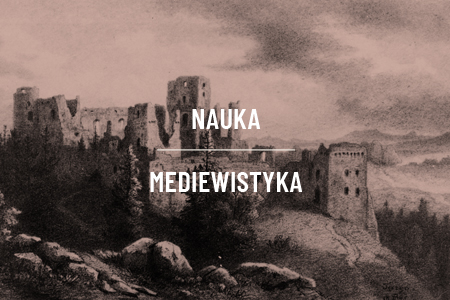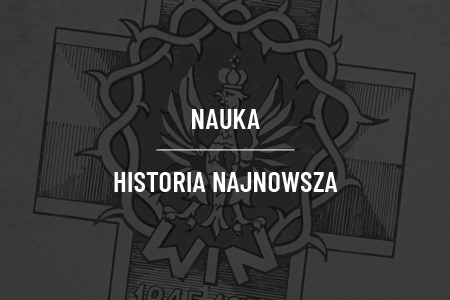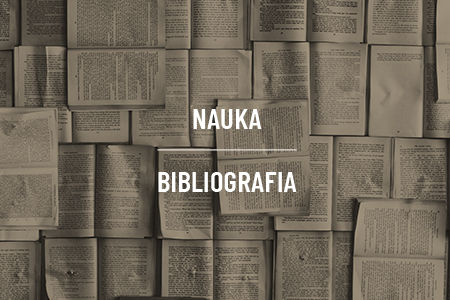
Janusz Kurtyka was a distinguished medievalist engaged in research on the history of the Polish aristocracy in the Middle Ages. He was also a specialist in the contemporary history of Poland, especially the history of the anti-Communist resistance movement active after the Second World War, and spent over half of his academic career on research in this branch of Polish history.
From the very outset of his involvement in social and public affairs, Janusz Kurtyka was committed to the Polish pro-independence movement. Under the Polish People’s Republic, he took an active part in the anti-Communist opposition movement and was a member of NZS (Niezależne Zrzeszenie Studentów, the independent students’ union). In the early 1990s he started his pioneering research on the armed resistance organisation WiN (Wolność i Niezawisłość; Freedom and Independence) and the post-war anti-Communist underground resistance movement. Alongside his work in scholarship, he was also engaged in projects promoting the interests of the Polish State, the highlight of which came in 2005–2010, when he was President of Poland’s Institute of National Remembrance.
For Janusz Kurtyka the priority issue was freedom, and he did all he could as a Polish historian, administrator, and patriot to open up the door for freedom. He wanted a free and independent Poland. A professional historian and an aficionado of history studies, he knew that the only way to build up a vigorous civil society was by acquiring a wide-ranging and deep knowledge of the history of one’s country.
Rola Janusza Kurtyki w polskiej przestrzeni publicznej
Tutaj powinien znaleźć się odpowiedni tekst wprowadzający.
History was his life and livelihood
Janusz Kurtyka came from Kraków, where he was born on 13th August 1960. His parents came from Radłów, a town near the city of Tarnów in southern Poland. In the 1950s they moved to Kraków, and Janusz’s father Stanisław Kurtyka enrolled at the AGH University of Science and Technology. Janusz grew up in Nowa Huta, a new quarter of the City of Kraków founded at the turn of the 1950s to accommodate a huge steelworks. The grand Stalinist Six-Year Plan of 1949–1955 envisaged Nowa Huta as the blueprint ”Socialist” (i.e. Communist) city. Janusz’s involvement in public affairs started when he was still very young. At school he was a member of the students’ self-governing body and served as editor of the school magazine. He was also a keen sportsman, played volleyball and trained karate.
He started taking a special interest in history when he was still at school and competed in national history contests for secondary school students. He became an avid reader of books on history, especially on Józef Piłsudski, whose writings laid the foundations for young Kurtyka’s worldview. In October 1979 he went up to the Jagiellonian University for History and joined its Students’ History Society, becoming a highly engaged member. He was its President when Martial Law was imposed in December 1981. Officially, the Society’s activities were suspended, but in reality Kurtyka and his colleagues continued its activities clandestinely.
Janusz Kurtyka’s main field of interest as an undergraduate was the medieval history of Poland. In 1983 he graduated, earning an M.A. in History on the grounds of a dissertation on the 13th –15th -century history and genealogy of the Morawice line of the House of Toporczyk (Morawicka linia Toporczyków w XIII do XV w. Studium historyczno-genealogiczne), for which he was awarded the top grade. His tutors were Professors Zbigniew Perzanowski, Jerzy Wiśniewski, Karol Buczek, and Antoni Gąsiorowski. After graduation he was employed in the Institute of History of the Kraków branch of the Polish Academy of Sciences, where he held a research appointment with the prestigious Pracownia Słownika Historyczno-Geograficzny Małopolski w Średniowieczu (Workshop for the Historical and Geographical Dictionary of Lesser Poland for the Middle Ages). It was there that he developed his research skills for the study of medieval history, and later often said that nowhere else did he learn as much for the pursuit of scholarship as in the Workshop.
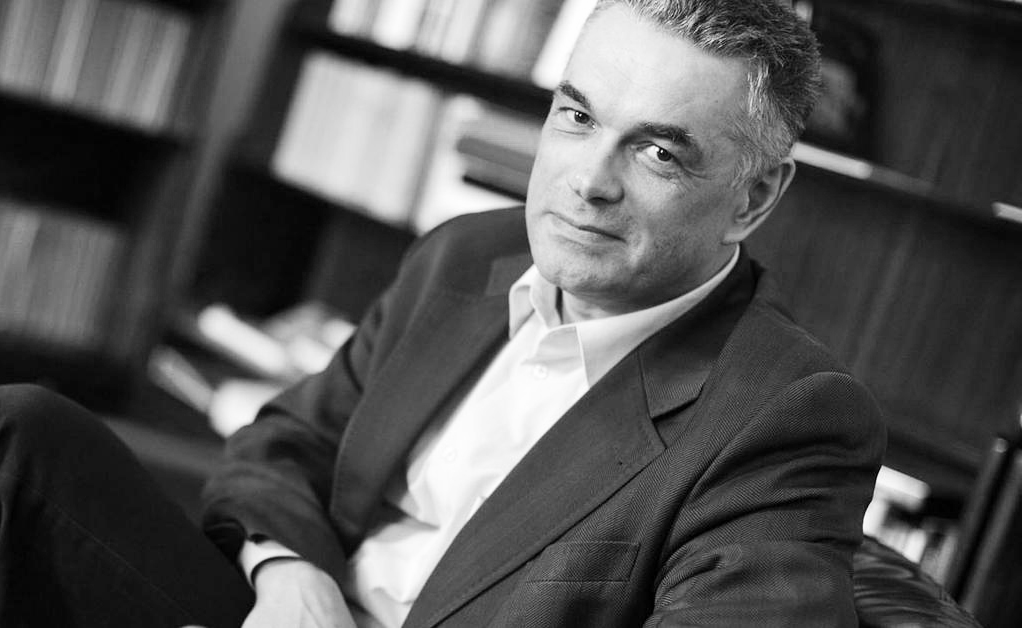
Academic achievements
As a scholar, Janusz Kurtyka is best known for his monumental book on the magnatic House of Tęczyński in medieval Lesser Poland (Tęczyńscy. Studium możnowładctwa małopolskiego w średniowiczu, Kraków: Secesja, 1997). He presented this study as his dissertation for the doctor’s degree in History, and published an extended and revised version, which has earned the reputation of the classic monograph on genealogy, a model for other historians to follow. In 2000 he presented his next book on the House of Tęczyński and their estates in 14th–17th centuries (Latyfundium tęczyńskie. Dobra i właściciele (XIV-XVII wiek), Kraków: Księgarnia Akademicka, 1999), for the post-doctoral habilitation degree. In his next book, Odrodzone królestwo (The Restored Kingdom, Kraków: Societas Vistulana, 2001), he continued his research on the Polish aristocracy in the Middle Ages). This publication gave a comprehensive account of all the research done up to that time on the history of the Kingdom of Poland, newly restored under the last monarchs of the Piast dynasty at the turn of the 14th century, its international situation, its ideology of kingship, and its modernisation policy. Janusz Kurtyka then proved his mettle as a first-rate historian and editor of source documents relating to the history of Podolia, a land in the Polish-Ukrainian border zone, with a book entitled Podole w czasach jagiellońskich, published posthumously (Kraków: Societas, 2011).
Alongside his work on medieval history, Janusz Kurtyka also conducted research on the contemporary history of Poland. In 1989 he brought out his biography of General Leopold “Niedźwiadek” (Little Bear) Okulicki, the last commander-in-chief of the Home Army, the Polish underground resistance force. Okulicki was one of the 16 Polish leaders abducted by the Soviets for a show trial in Moscow and murdered in the Lubianka Prison in 1946. Kurtyka’s book on him was the first biography of Okulicki to be published in Poland. It was issued as a samizdat. In 1994 Janusz Kurtyka was appointed chief editor of Zeszyty Historyczne WiN-u, a periodical dedicated to the history of the WiN organisation, and turned it into a fully professional scholarly journal. Wojciech Frazik, one of Kurtyka’s colleagues on the board of editors, estimated that 27 editions of the journal (Nos. 5–31, 1994–2009) containing 564 articles, memorials, source editions, and biographies, came out when Kurtyka was chief editor.
Janusz Kurtyka is the author of well over 120 scholarly publications and over 30 forewords and postscripts to works by other authors. He also served as editor or co-editor of 5 scholarly journals and publisher’s series. His full bibliography is available on the Foundation’s website

Fighting for independence
Life in the Polish People’s Republic, a country which was not a sovereign state, was a major factor influencing Janusz Kurtyka’s worldview and prompting his decision to join the Polish pro-independence movement. His involvement in anti-Communist organisations started in 1980. He was one of the founding members of the branch of NZS, the independent students’ union, operating in the Jagiellonian University’s Faculty of Philosophy and History, and served as the NZS representative to the Academic Councils of his faculty and institute at the University. In February 1981 he took part in the NZS students’ strike, which was called to obtain official registration as a students’ union for NZS. He was one of the organisers of a programme of lectures for the students on strike, to counteract the Communist propaganda that the strike was merely an excuse for non-attendance at classes. In 1980 he organised the group of students representing the Jagiellonian University who travelled to Gdańsk for the unveiling ceremony of the Victims of December 1970 Memorial. A year later he was a member of the organising committee for the celebration of Poland’s Independence day (11th November), held jointly by NZS with the Lesser Polish Regional Branch of the Solidarity Trade Union.
When the Communists imposed Martial Law in December 1981 and launched massive reprisals against oppositionists, Janusz Kurtyka continued to work as a member of the programme council of the NZS, which now operated clandestinely. He also set up another underground resistance organisation in Nowa Huta which pursued activities such as producing spikes used by Solidarity demonstrators to puncture the tyres of Communist police Black Marias, and installing clandestine broadcasting stations for Radio Solidarity. He was the brains behind the idea to set up a network of bugging devices to record police radio messages. He also ran a counter-espionage group to protect NZS against penetration by the secret police. This was something of a novelty, because for the entire period of its legal operations, the Solidarity Trade Union was an open movement. Janusz Kurtyka knew that due to his involvement in the opposition movement he was under Communist police surveillance.
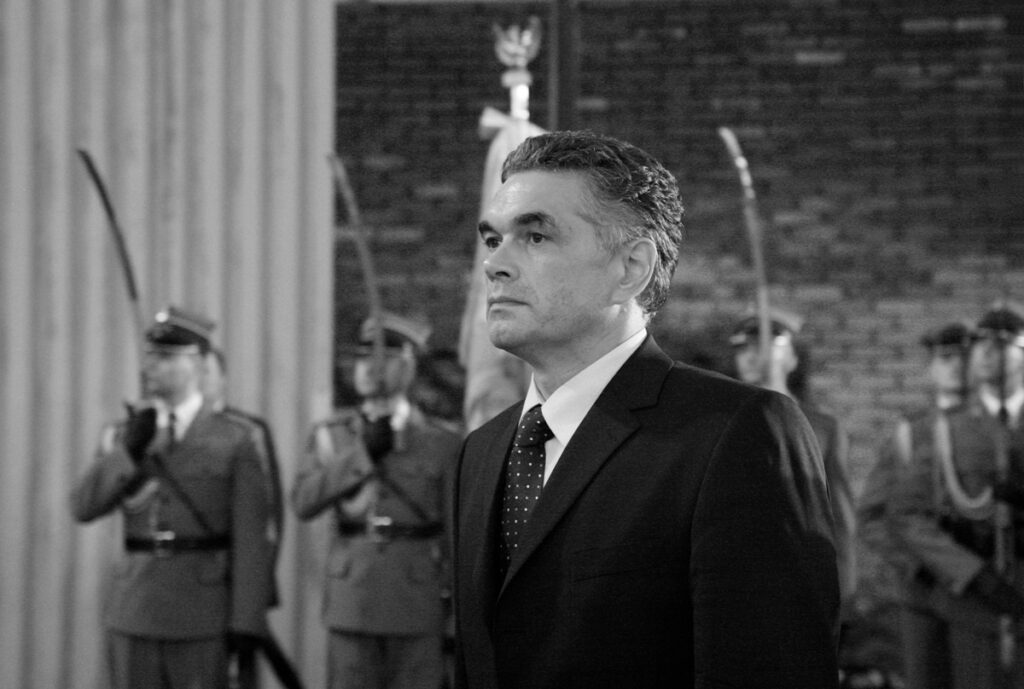
In the service of Poland
When Poland freed herself from Soviet domination, Janusz Kurtyka committed himself to the service of the Polish State. In the 1990s he established close relations with veterans of who had fought for the country’s independence. Andrzej Zagórski (nom-de-guerre Mścisław), a Home Army veteran, played a key role in getting Kurtyka in touch with the community of ex-combatants who had fought in Poland’s struggle for independence. Kurtyka became one of the foremost researchers collecting records of the history of the Polish pro-independence resistance movement of 1939–1956. His work as chief editor of Zeszyty Historyczne WiN-u and his contribution to public affairs was a vital advantage that helped him win the election to the presidency of the board of the veterans’ association Stowarzyszenie Społeczno-Kombatanckie Wolność i Niezawisłość (2003; he was re-elected in 2005 and 2007 for two more terms of office). In 2001 Zeszyty Historyczne WiN-u was awarded the Jerzy Łojek Prize by the Jerzy Łojek Foundation, which is attached to the Józef Piłsudski Institute of America.
Janusz Kurtyka was an outstanding academic tutor. He lectured and conducted classes in two institutions of higher education, Państwowa Wyższa Szkoła Wschodnioeuropejska w Przemyślu (the Przemyśl East European College), and Wyższa Szkoła Filozoficzno-Pedagogiczna Ignatianum w Krakowie (the Kraków Ignatianum College for Philosophy and Teachers’ Training).
In his work in the public sphere, he held two of the top appointments in Poland’s Institute of National Remembrance. In 2000–2005 he was head of its Kraków branch. Subsequently, he was elected and appointed by the Polish Parliament to serve as the Institute’s President, holding the office from 2005 to 2010. In both of these key posts he proved his acumen and management skills. His leadership qualities won him the trust and respect of those who wanted genuine change in Polish policy on history, especially the recognition of the Indomitable Soldiers (viz. resistance fighters who had stood up to the imposition of Communist rule after the War) and what they had done for the country’s independence. Janusz Kurtyka was a mentor of those who saw a need for a reckoning with the Communist regime. This earned him the hostility and defiance of some of the media and members of the Communist ancien régime, who availed themselves of any occasions they could to blacken his name.
During his term of office as President of the Institute of National Remembrance, he was one of the pioneers of the project to have a National Memorial Day for the Indomitable Soldiers who had fought against the Communist regime. He was deeply concerned to keep the memory of the victims of the Katyn Massacre alive and to disseminate the truth about this Soviet atrocity. Just a few days before his death, he attended a book promotion for Zbrodnia Katyńska. W kręgu prawdy i kłamstwa on the Katyn Massacre, which the Institute published in 2010.
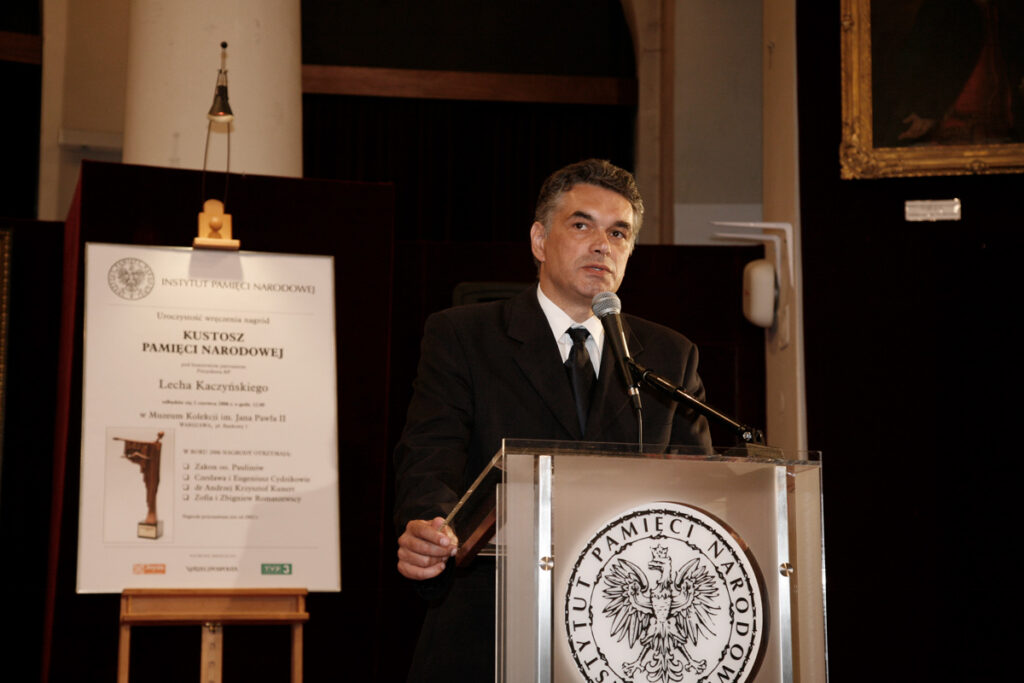
Death in service
Janusz Kurtyka was killed in the Smolensk air crash on 10th April 2010, along with President Kaczyński and all the members of the Polish delegation travelling to attend the memorial ceremony to mark the 70th anniversary of the Katyn Massacre. He was laid to rest in the Distinguished Persons’ Section of the Rakowicki Cemetery in Kraków The Commander’s Cross and Star of the Order of Polonia Restituta was conferred on him during his lifetime (7th April 2009), and the Grand Cross the Order of Polonia Restituta posthumously (19th April 2010).
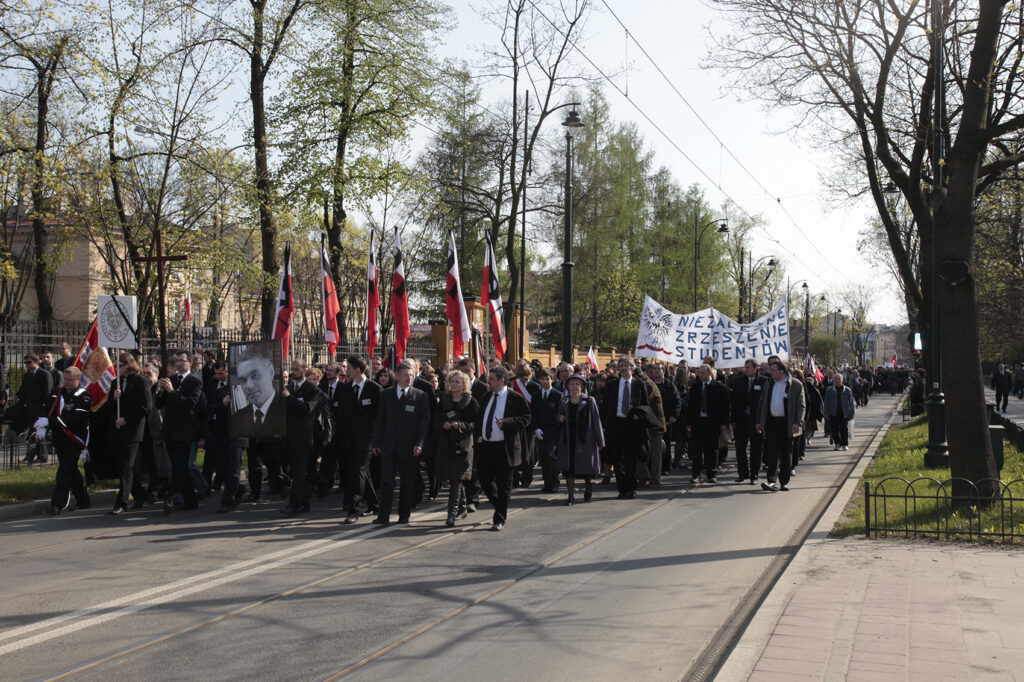
Tributes and memorials
The Janusz Kurtyka Foundation was founded in 2016 to continue his work. We are doing this by awarding the Janusz Kurtyka Prize for the best book of the year on Polish history. We have also set up the Foundation’s Library, the core of which has come from our Patron’s private book collection. Our activities focus on continuing the Janusz Kurtyka legacy of work on behalf of Poland’s freedom and independence.
Janusz Kurtyka has been honoured by the Institute of National Remembrance with a memorial plaque unveiled on his sixtieth birthday in its Warsaw headquarters. The Institute’s educational centre Przystanek Historia has been named after him. The Institute has also issued a number of publications in tribute to its erstwhile President. They include the following:
– Obudzić naród do wielkości… Wystąpienia Janusza Kurtyki przed Parlamentem RP 2005–2010 (“To Revive the Nation”: a collection of speeches and addresses Janusz Kurtyka delivered to the Polish Parliament in 2005–2010);
– Rzeczpospolita wolnych ludzi. Janusz Kurtyka w mediach – wybór wywiadów, artykułów, oświadczeń z lat 2000– 2010 (“The Republic of the Free”: a selection of Janusz Kurtyka’s interview, articles, and announcements published in the media in 2005–2010);
– Janusz Kurtyka. Rzeczypospolitej historyk i urzędnik (“Janusz Kurtyka, historian and administrative officer of the Republic of Poland”);
– Z dziejów agonii i podboju. Prace zebrane z zakresu najnowszej historii Polski (“From the history of a nation’s defeat and death throes: a collection of papers on the contemporary history of Poland”);
– Biuletyn IPN. Numer specjalny 2010 (A special issue of the Institute’s periodical Biuletyn IPN, 2010);
– „Zeszyty Historyczne WiN-u”, nr 32–33: Historia i pamięć. Księga dedykowana Januszowi Kurtyce (Zeszyty Historyczne WiN-u, No. 32–33. A memorial volume for Janusz Kurtyka).
In September 2020 Festiwal Filmowy Niezłomni Niepokorni Wyklęci (the Film Festival for the Undaunted, the Indomitable, and the Anathematised) paid a tribute to Janusz Kurtyka with the posthumous award of its Independence Signet.
Another commemorative event was the resolution adopted by Warsaw Municipal Council in 2020 to have a street named after Janusz Kurtyka. His street is in the district of Mokotów, not far from the headquarters of the Institute of National Remembrance.
A monument to Janusz Kurtyka was unveiled in 2014 in a place near Kraków called Morawica, which is connected with his research work. Another memorial, unveiled in 2015, stands in the National War Heroes’ Cemetery at Ossów, one of the chief battlefields of the Polish – Bolshevik War of 1920.
On 14th April 2011 an obelisk commemorating the victims of the Katyn Massacre and the Smolensk air crash, President Lech Kaczyński, First Lady Maria Kaczyńska, and Janusz Kurtyka, was unveiled on the premises of the college in Przemyśl where Janusz Kurtyka held a professorship.
Memorial plaques and tablets dedicated to Janusz Kurtyka are located in the following places:
- The Konopka Mansion in Wieliczka (unveiled on 13th August 2010). During his term as head of the Kraków branch of the Institute of National Remembrance, Janusz Kurtyka had this building restored to accommodate the Institute’s regional archives.
- St. Casimir’s Church, Kraków (unveiled on 8th April 2011). This church is on the opposite side of the street from the Institute’s main office in Kraków.
- At a place called Węgrów (unveiled on 9th April 2013).
- St. Joseph’s Church, Kraków (unveiled on 13th April 2013).
- In 2010 a memorial tablet was put up on the façade of the Institute’s old headquarters at ul. Towarowa 28 in Warsaw. It was removed when the building was demolished, but an application has been submitted to have it reinstalled on the site.

